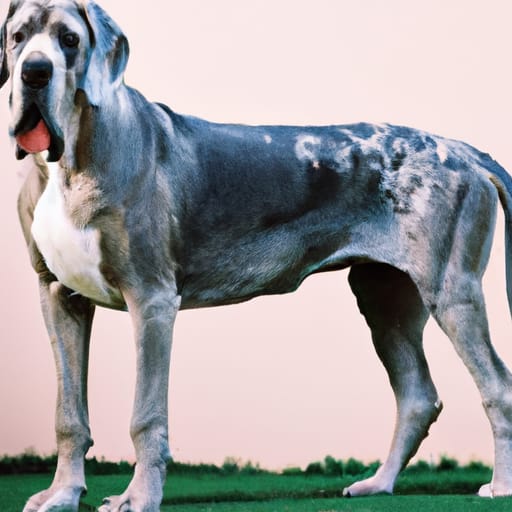Morkies Shedding: Why Do Morkies Shed?
Do Morkies Shed? Do you own a Morkie or are considering getting one as a furry companion? If so, you might be curious about the shedding habits of these adorable little dogs. In this article, we will explore the topic of Morkies shedding and help you understand why they shed. Whether you are a current owner or just starting your research, this information will provide valuable insights into the grooming needs of Morkies. So, let’s dive in and discover why Morkies shed!
Understanding Morkies
What are Morkies?
Morkies are a popular designer breed of dogs that are a mix between a Maltese and a Yorkshire Terrier. These adorable little dogs combine the best qualities of both breeds, making them a beloved choice for many pet owners. Morkies are known for their small size, friendly temperament, and adorable appearance, with their soft and silky coats being one of their most defining features.
Characteristics of Morkies
Morkies inherit traits from both the Maltese and Yorkshire Terrier breeds, resulting in a unique combination. These dogs are small in size, usually weighing between 4 to 8 pounds. Morkies have a playful and affectionate nature, making them great companions for individuals, couples, and families alike.
One of the most well-known characteristics of Morkies is their beautiful coat. These dogs typically have long, silky hair that requires regular grooming to keep it looking its best. Morkies are also known to be intelligent, easily trainable, and have a loving and loyal disposition.
Popular Morkie Breeds
There are several popular variations of Morkies, depending on the specific mix of Maltese and Yorkshire Terrier. Some common Morkie breeds include:
- Maltese-Yorkie Mix (50% Maltese, 50% Yorkshire Terrier)
- Maltese-Yorkie-Poodle Mix (33% Maltese, 33% Yorkshire Terrier, 33% Poodle)
- Maltese-Yorkie-Shih Tzu Mix (40% Maltese, 30% Yorkshire Terrier, 30% Shih Tzu)
- Maltese-Yorkie-Pomeranian Mix (50% Maltese, 25% Yorkshire Terrier, 25% Pomeranian)
Each Morkie breed has its own unique characteristics and traits, so it’s important to do your research and consult with reputable breeders to find the perfect Morkie for you.
Shedding in Dogs
Explanation of Shedding
Shedding is a natural process in which dogs lose old or damaged hairs to make way for new hair growth. It is a normal part of a dog’s life cycle and serves to keep their skin and coat healthy. Shedding varies among different dog breeds, with some breeds shedding very little while others shedding more frequently.
Common Reasons for Shedding in Dogs
There are several common reasons why dogs shed, including:
- Seasonal Changes: Many dog breeds shed their coats in response to changing seasons. This is especially true for breeds with thick double coats that protect them from extreme weather conditions. In the spring, dogs shed their heavier winter coat to make way for a lighter summer coat.
- Hormonal Changes: Hormonal imbalances, such as those caused by pregnancy or nursing, can trigger shedding in dogs. Female dogs may experience shedding after giving birth, while male dogs can shed due to changes in testosterone levels.
- Stress or Anxiety: Dogs may shed excessively when they are stressed or anxious. This can include events such as moving to a new home, the loss of a family member or another pet, or a change in routine.
- Poor Nutrition: A dog’s diet plays a vital role in their overall health, including the health of their coat. A lack of essential nutrients, such as omega-3 fatty acids and vitamin E, can lead to dry and brittle hair, increasing the likelihood of excessive shedding.
- Medical Conditions: Certain medical conditions, such as allergies, skin infections, and hormonal imbalances, can cause excessive shedding in dogs. If you notice your dog shedding more than usual, it is essential to consult with a veterinarian to rule out any underlying health issues.
Shedding vs Non-shedding Breeds
While shedding is a natural process in most dogs, there are some breeds that are considered “non-shedding” or “hypoallergenic.” These breeds typically have hair instead of fur, which grows continuously and does not shed in the same way as fur. Non-shedding breeds, such as Poodles and Bichon Frises, may still lose some hair, but it is minimal and usually goes unnoticed.
It’s important to note that Morkies, like their parent breeds, are not considered non-shedding. They have a luxurious coat that requires regular grooming to prevent matting and excessive shedding. However, Morkies may shed less than other breeds due to their small size and hair-like coat.
Factors Affecting Shedding in Morkies
Genetics and Breed
The amount of shedding in Morkies can be influenced by genetics and the specific breed mix. While Morkies are generally a cross between a Maltese and a Yorkshire Terrier, the percentages of each breed can vary from one Morkie to another. This genetic variation can affect the amount of shedding and the characteristics of their coat.

Coat Type and Texture
Morkies can have different coat types and textures depending on their genetic makeup. Some Morkies may have a straight and silky coat similar to the Maltese, while others may have a slightly more wiry and dense coat like the Yorkshire Terrier. The type and texture of the coat can impact shedding patterns and maintenance requirements.
Seasonal Shedding
Like many other dog breeds, Morkies may experience seasonal shedding. They may lose more hair during the change of seasons as their body adapts to the temperature and daylight variations. Regular grooming during these times can help manage shedding and keep their coat healthy.
Overall Health and Diet
A Morkie’s overall health and diet play a significant role in their shedding patterns. Dogs that are in good health, receive proper nutrition, and have a balanced diet are more likely to have a healthy coat and reduced shedding. It is essential to provide a high-quality dog food that is rich in essential nutrients and omega-3 fatty acids to promote a healthy coat.
Environmental Factors
Environmental factors can also contribute to shedding in Morkies. Factors such as indoor temperature, humidity levels, and exposure to allergens can impact the health of their skin and coat. Maintaining a clean and allergen-free environment can help reduce shedding and keep your Morkie comfortable.
Understanding Morkies’ Coat
Coat Characteristics
Morkies have a beautiful and luxurious coat that is often described as silky and soft to the touch. Their coat is typically long and flowing, cascading down their body in elegant waves. Morkies have a single-layer coat, meaning they do not have an undercoat like some other breeds. This makes their coat less prone to tangling and matting.
Coat Colors
Morkies come in a variety of coat colors, adding to their charm and appeal. Some common coat colors of Morkies include:
- Black and Tan: This color combination is reminiscent of their Yorkshire Terrier heritage, with a dark black or brown body and tan markings on the face, legs, and chest.
- White and Cream: Many Morkies have a predominantly white or cream-colored coat, which is often influenced by their Maltese genes.
- Parti: Parti-colored Morkies have a coat with distinct patches of two or more colors. These variations can include black, tan, white, or any combination thereof.
Coat Length
Morkies can have varying coat lengths, which may influence shedding and grooming requirements. Some Morkies have a shorter, more manageable coat length, while others have a longer and more flowing coat that requires more maintenance. It is important to consider your preferences and lifestyle when choosing a Morkie with a particular coat length.
Degree of Shedding in Morkies

Low Shedding Morkies
While Morkies are not considered non-shedding, some Morkies may shed less than others. Morkies with a straight and silky coat texture tend to shed less than those with a denser and wiry coat. Additionally, Morkies that inherit more characteristics from their Maltese parent may shed less compared to those with a stronger influence from the Yorkshire Terrier.
Moderate Shedding Morkies
Most Morkies fall into the category of moderate shedders. These dogs will shed a moderate amount of hair throughout the year, with slightly increased shedding during seasonal transitions. Regular grooming and brushing can help manage moderate shedding and prevent matting or tangling of the coat.
Excessive Shedding Morkies
While excessive shedding is less common in Morkies, some dogs may shed more than usual due to various factors. These factors can include stress, allergies, poor nutrition, hormonal imbalances, or underlying health conditions. If you notice your Morkie shedding excessively, it is important to consult with a veterinarian to determine the underlying cause and provide appropriate treatment.
Managing Morkie Shedding
Regular Grooming
Regular grooming is essential to manage shedding in Morkies. Brushing their coat at least a few times a week helps remove loose hair and prevents it from accumulating on furniture or clothing. It also prevents matting and tangling, which can lead to discomfort and skin irritation. Using a slicker brush or a comb with rotating teeth can be effective in removing tangles and keeping the coat healthy.
Bathing and Shampooing
Bathing Morkies on a regular basis helps keep their coat clean and healthy. However, excessive bathing can strip away the natural oils from their skin, leading to dryness and increased shedding. It is recommended to bathe Morkies every three to four weeks or as needed, using a gentle shampoo formulated for dogs. This helps maintain the natural oils in their coat without causing dryness or irritation.
Brushing Techniques
Proper brushing techniques are important for managing shedding in Morkies. Start by using a comb or a slicker brush to gently remove any tangles or knots in their coat. Be gentle and avoid pulling on the hair, as this can be uncomfortable for your Morkie. Use long strokes and work from the roots to the ends of the hair to remove any loose hair effectively.
Professional Grooming
Regular professional grooming is recommended for Morkies, especially if you prefer to keep their coat long and flowing. Professional groomers have the expertise and tools necessary to maintain the coat’s health, manage shedding, and create beautiful styles that suit your Morkie’s appearance and personality. Professional grooming sessions usually include brushing, de-shedding, bathing, trimming, and creative styling.
Controlling Allergens
If you or a family member have allergies, it is essential to take measures to control allergens in your home. Regular vacuuming, dusting, and washing of bedding can help reduce the amount of allergens present in your living environment. Additionally, providing your Morkie with a clean and hypoallergenic bed and using air purifiers can aid in minimizing allergens that may contribute to shedding and allergic reactions.
Skin and Coat Care for Morkies
Proper Nutrition and Hydration
Proper nutrition and hydration are vital for maintaining a healthy skin and coat in Morkies. Ensure your Morkie has access to fresh water at all times and provide them with a balanced and high-quality dog food that caters to their specific needs. Look for dog foods that contain essential fatty acids, such as Omega-3 and Omega-6, which promote healthy skin and coat.
Supplements for Coat Health
Supplements can be beneficial in promoting a healthy coat and reducing shedding in Morkies. Omega-3 fatty acid supplements, such as fish oil, can help improve coat texture and reduce inflammation. Biotin supplements can also support healthy skin and coat, as well as assist in reducing shedding. However, it is important to consult with your veterinarian before adding any supplements to your Morkie’s diet.
Preventing Allergic Reactions
Morkies, like other dogs, can be prone to allergies that can affect their skin and coat health. To prevent allergies, it is important to minimize exposure to potential allergens such as certain foods, pollen, dust mites, or chemicals. Keep your Morkie’s living environment clean and free from potential allergens, and consult with a veterinarian if you suspect your Morkie is experiencing an allergic reaction.
Skin Care for Morkies
Proper skin care is essential for maintaining a healthy coat and reducing shedding in Morkies. Regularly check your Morkie’s skin for any signs of irritation, dryness, or infection. Clean their ears regularly to prevent wax build-up and potential ear infections. Pay attention to any changes in their skin, such as redness, rashes, or sores, and consult with a veterinarian if you notice anything out of the ordinary.
Addressing Potential Health Issues
Allergies and Skin Conditions
Morkies may be prone to allergies and various skin conditions, which can contribute to shedding. Common allergies in dogs include food allergies, environmental allergies, and flea allergies. It is important to identify and address any allergies or skin conditions promptly to minimize shedding and ensure your Morkie’s overall health and well-being.
Hormonal Imbalances
Hormonal imbalances, such as hypothyroidism or Cushing’s disease, can affect a dog’s coat and lead to excessive shedding. If you notice significant changes in your Morkie’s coat, such as patchy hair loss or thinning, it is important to consult with a veterinarian to rule out any hormonal imbalances.
Parasites
Parasitic infestations, such as fleas or mites, can cause skin irritations and excessive itching, leading to hair loss and shedding in Morkies. It is important to regularly check your Morkie for parasites and ensure they are protected with appropriate flea and tick prevention measures. Consult with a veterinarian if you suspect a parasitic infestation.
Regular Vet Check-ups
Regular veterinary check-ups are crucial for monitoring your Morkie’s overall health, including their skin and coat condition. A veterinarian can identify any underlying health issues that may contribute to shedding and provide appropriate treatment or advice. Follow their recommended vaccination and preventive care schedule to maintain your Morkie’s well-being.
Seeking Professional Advice
If you are concerned about your Morkie’s shedding or have specific questions about their coat care, it is always a good idea to seek professional advice. Veterinarians, professional groomers, or reputable breeders can provide valuable insights and guidance tailored to your Morkie’s specific needs.
Breeding Considerations
Selective Breeding
When considering breeding Morkies, it is essential to practice responsible and selective breeding. Breeding should only be done by experienced and reputable breeders who prioritize the health and well-being of the dogs. Breeding two Morkies with low shedding potential can increase the chances of producing Morkie puppies with similar characteristics.
Inheritance of Shedding Traits
The shedding traits in Morkies can vary depending on the genetics inherited from their parent breeds. While it is impossible to guarantee that a Morkie will be completely non-shedding, breeding Morkies with low shedding potential can increase the likelihood of producing offspring with reduced shedding tendencies. However, it is important to remember that genetics can be complex, and individual variations can still occur.
Breeder’s Reputation and Practices
Choosing a reputable breeder is crucial when considering getting a Morkie puppy. Reputable breeders have a track record of prioritizing the health and well-being of their dogs. They should be knowledgeable about the breed, perform health tests on their breeding dogs, and provide proper care and socialization for the puppies. Research and visit multiple breeders to ensure you find a breeder you can trust.
Conclusion
Understanding and managing shedding in Morkies is essential for their overall health and the well-being of both the dog and the owner. While Morkies are not considered non-shedding, they bring joy and companionship to thousands of households around the world. With proper maintenance, care, and understanding of your Morkie’s needs, you can minimize shedding, keep their coat healthy and beautiful, and enjoy a happy and loving relationship with your furry companion.










